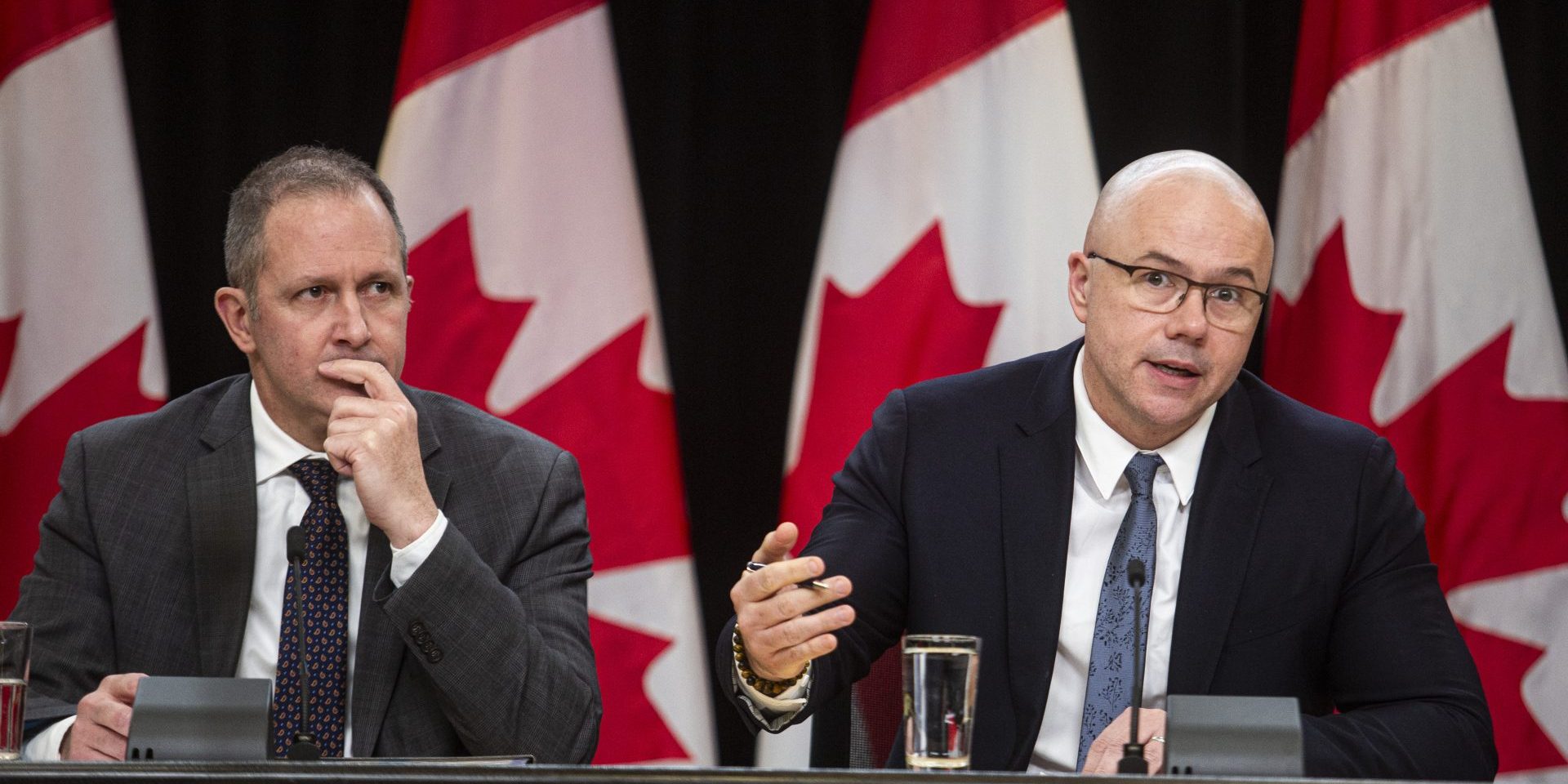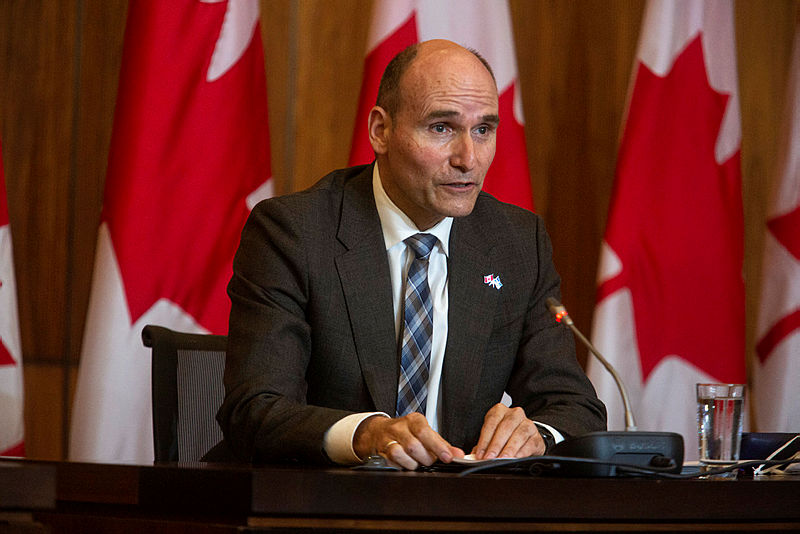Feds eye March decision on replacing problem-plagued Phoenix payroll system

The federal government is inching closer to replacing the controversial Phoenix pay system, with officials set to decide by the end of March whether the new human resources and payroll platform currently being tested can be implemented next year.
In a Jan. 22 briefing on the government’s efforts to fix payroll issues, Alex Benay, associate deputy minister at Public Services and Procurement Canada (PSPC), told reporters that a “go/no-go recommendation” regarding Dayforce will be made by March 31.
“We feel very comfortable that we’re moving in the right direction,” Benay said, adding that the decision will be based on concrete testing results. He noted that a recent test showed an 88-per-cent success rate in processing 1,000 different transactions. He underscored that the March decision does not mean the government will launch the system, but rather that it will continue configuring and testing.
If the system is approved, the implementation then could take another 18 to 20 months, Benay explained.
Dayforce is an online platform that delivers payroll, human resources, benefits, talent, and workforce management services. Since 2018, the federal government has invested more than $150-million in developing the platform as a potential replacement for the troubled Phoenix pay system. PSPC has been testing the Dayforce platform since 2022, and the department said it has shown promise in meeting the government’s specific payroll needs.
When it comes to the current system, in 2024, 98.1 per cent of public servants were paid the correct amount and on time across all departments and agencies, according to Benay.
The Phoenix pay system, originally intended to streamline payroll administration for federal employees, has become one of the government’s costliest failures. The errors in the pay system’s implementation resulted in substantial inconsistencies from the outset, with hundreds of thousands of public servants either being overpaid, underpaid, or not paid at all in some cases. Once touted as a cost-saver, Phoenix has cost the federal government more than $3.5-billion since 2017.
“We know that public servants that we serve are hard working. They’re committed, and they’re generous, and we owe it to them to get their paycheques on time and in good order,” Benay said.
PSPC officials at the briefing also highlighted that efforts to clear the pay system backlog are ongoing with 25,000 cases—those with financial impacts, priority cases at Shared Service Canada, and cases from routine operations—having been processed over the last three months. Benay said the net backlog reduction stands at 27 per cent of the total, which he said is a “progress, but not happening as quickly” as the department wants.
“The problem is that we do not control the intake,” Benay said, adding that the pay centre received 300,000 cases from departments in the last quarter that required manual intervention.
Benay highlighted the importance of using artificial intelligence in processing those cases, noting that the AI virtual assistant tool currently being tested is expected to dramatically increase automated processing. The department plans to begin automating bulk transactions in April.
According to Benay, early tests showed the AI tool processed more than 4,300 backlog cases with the assistance of 30 compensation advisers.
“We have to figure out what we’re doing on the technology front, as well, otherwise we will still be stuck in this situation for years to come,” said Benay, adding that the department has no plans to remove human advisers any time soon.
The government’s third quarter progress report on pay issues outlined several new measures, including the introduction of a singular streamlined maternity and parental leave form that consolidates four previous forms, upgrades to the HR management tools to ensure they’ll continue to be supported for a few more years, the creation of a board to oversee the ethical use of AI in operations, and updates to the Phoenix pay system database to enhance reliability.

A Jan. 22 PSPC news release described the ongoing pay issues as “unacceptable,” with Procurement Minister Jean-Yves Duclos (Québec, Que.) saying timely and accurate compensation is a “top priority” for his department. Meanwhile, Treasury Board President Ginette Petitpas Taylor (Moncton–Riverview–Dieppe, N.B.) said the government plans to meet with stakeholders and bargaining agents in the coming months.
Phoenix costs stack up
The third quarter progress report shows that the government is projected to spend nearly a billion dollars—$955.9-million to be exact—in the 2024-25 fiscal year to run—and fix—the pay system.
Of this, nearly $811-million is allocated to current operations as well as addressing the long-standing pay issues that have affected 430,000 current and former employees. This includes improving support at the Public Service Pay Centres, and efforts to resolve years-old backlog transactions.
The projections show that $354.5-million is earmarked for the Pay Centre to process payroll for more than 250,000 public servants, which includes managing new hires and promotions, and addressing outstanding pay issues. The government is also allocating more than $250-million for IT support, about half of which is dedicated to contracts with IBM Canada—which made the initial Phoenix system—and Oracle, the database supporting the pay system going forward.
An additional $89-million is set aside for pay administration, which includes ensuring data accuracy, issuing tax slips, and implementing collective agreements. This work includes a $20-million contract with PricewaterhouseCoopers for advisory services for stabilizing the payroll system.
Another $69-million is set aside for business support and internal services, and nearly $48-million for the Client Contact Centre, which provides assistance to public servants and retirees.
In the meantime, more than $145-million is allocated for “transformation”—the efforts to modernize the system—which includes approximately $77-million for expanded Dayforce testing.
Another $45-million is earmarked to pay for the salaries of public servants, training, and other expenses related to developing a new system, and $22.7-million is allocated to the Treasury Board to work on simplifying HR processes.
The Phoenix pay system was designed to streamline the government’s $22-billion payroll and save $70-million annually, but instead took seven years to complete, and far surpassed the initial $310-million budget set aside for its creation and implementation.
The federal government has been grappling with the ongoing challenge of transforming and renewing its human resources and payroll systems for almost 40 years.
The lack of standardized HR and pay-management processes across the federal public service has led to significant challenges with the current pay system.
The 2024 budget included $135-million to explore a new HR and pay solution for the public service. Of this, about $112-million was allocated to PSPC, with $85-million directed toward amending the Dayforce contract to expand testing and tailor the system to the specific needs of the Canadian public service. The remaining $22.7-million was allocated to the Treasury Board Secretariat for initiatives aimed at simplifying HR processes and creating a central data hub.
The IBM-made Phoenix system was created in June 2011 through a competitive procurement process under the Harper Conservative government. The program was rolled out by the Trudeau Liberals in 2016, despite unions warning that it was not ready.
The federal government’s HR and pay systems deliver $36-billion annually in salaries to more than 430,000 public servants across 100 departments and agencies.
ikoca@hilltimes.com
The Hill Times






 LICENSING
LICENSING PODCAST
PODCAST ALERTS
ALERTS













